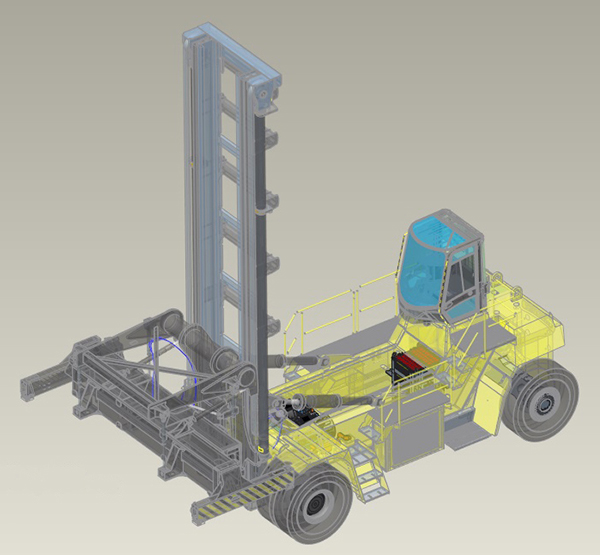Electrifying Big Truck Fleets

Hyster Company is testing high capacity lift trucks with electric motors. The company suggests that, in the near future, ports and heavy industry will be able to electrify their big truck fleets, producing zero emissions while achieving comparable full shift performance.
“Using a modular approach and innovative technology, applications will soon have maximum flexibility when selecting trucks to provide the best zero emissions solution for their needs,” says Brett Schemerhorn, president Big Trucks, Americas for Hyster.
“The modular approach to the design will allow flexibility in the onboard power source,” he continues. “Initial introductions are likely to be based on lithium-ion batteries. However, through our relationship with Nuvera Fuel Cells, we expect that implementation of hydrogen fuel cells will be achieved in the next phase. Hydrogen fuel cells will allow for rapid refueling, increased productivity, and longer run time between refills.”
To help heavy industry and ports maintain a low total cost of ownership, Hyster pioneered low emissions with Tier 4 / Stage IV diesel engines on its Big Truck range. It is now leading the industry by developing solutions to enable applications to move from profitable low emissions, to profitable zero emissions using electric trucks.
“As with Tier 4/Stage IV, when applying electric motors to Big Trucks, it is all about achieving a balance between the vertical movement of the load and the power take-off in combination with the traction,” says Jan Willem van den Brand, director Big Truck product strategy and solutions for Hyster. “This balance needs to be achieved in order to ensure efficiency, while avoiding oversized electric systems and an unacceptable range of movement.”
To drive efficiency and manage costs, the new electric trucks will be built to match the needs of the specific application. Previously the duty cycle of the application drove the power output determination, including factors such as engine power, tractive effort, load capacity, and speed.
“With electric motors, there are additional duty cycle variables to consider,” explains van den Brand. “Hours of operation and number of moves, power costs (Hydrogen vs Electricity) and infrastructure set up costs, such as considerations of time and cost for charging or refueling, must all be considered when electrifying a Big Truck.”
A project to electrify a Hyster laden container handler is currently underway.
